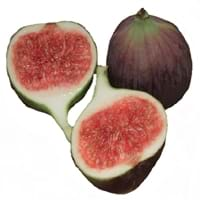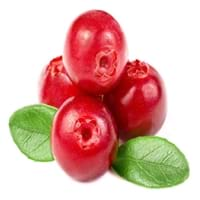Health Benefits
Cancer prevention, Controls blood pressure, Heart care, Increase in haemoglobin, Prevents constipation, Prevents macular degeneration, Reduces nervous tension
Cancer prevention, Heart care, Kidney stone treatment, Scurvy treatment, Ulcer prevention
General Benefits
Controls blood pressure, Helps in weight loss, Maintains healthy cholesterol level, Strengthens bones
Anti-inflammatory properties, Boosts immune system, Digestive aid, Fights against infections, Strengthens bones
Skin Benefits
Brightens and lightens complexion, Hydrates skin, Skin rejuvenation, Treatment of acne
Anti-aging benefits, Reduces wrinkles, Skin rejuvenation, Treatment of acne
Hair Benefits
Good conditioner, Regulates hair growth, Softening mask
Promotes longer and healthier hair, Protects hair, Treatment of dandruff
Allergy Symptoms
Abdominal pains, Anaphylaxis, Coughing, Headaches, Hives, Itching, Nasal congestion, Skin rash, Sneezing, Sore throat, Swelling of hands
Anaphylaxis, Breathing difficulty, Itching, Skin rash, Swelling of mouth, tongue or lips
Side Effects
Allergic reaction, Skin rash, Possibly unsafe during pregnancy
Allergic reaction, Diarrhoea, Nausea, Stomach pain, Vomiting
Best Time to Eat
Best if taken as a breakfast (or empty stomach), Don't consume at night and before bed, Morning time (before lunch)
Any time except an hour after meal, Don't consume at night and before bed
Vitamin B5 (Pantothenic Acid)
Vitamin C (Ascorbic Acid)
Vitamin K (Phyllochinone)
Phytosterol
Not Available
Calories in Fresh Fruit with Peel
Calories in Fresh Fruit without Peel
Not Available
Not Available
Season
Summer, Winter
Autumn
Varieties
Abyad, Adriatic, Alma, Atreano, Bataglia, Black Bethlehem, Black Madeira, Black Mission, Brown Turkey, Sierra, Calimyrna, Kadota, Deanna, Figoin and Hardy Chicago Fig
Early Black, Howes, Ben Lear and Stevens
Color
Green, Purple, Red
Red
Origin
Western Asia
North America
Soil Type
Clay, Limestone, Loam, Sandy
Clay, Sandy, Well-drained
Climatic Conditions
Dry, Warm
Warm
Facts about
- Fig tree is considered as a symbol of abundance, fertility and sweetness.
- The fig is made up of 55% of natural sugar so they are the sweetest fruits.
- Figs are used as a fat substitute in recipes.
- Europeans thought the cranberry blossom looked like the head of a sandhill crane, hence the name Cranberry.
- They are also known as bounce berries as they bounce when they ripe.
- Cranberries do not grow in water.
Top Producer
Turkey
United States of America
Other Countries
Albania, Algeria, Brazil, Egypt, Iran, Morocco, Syria, Tunisia, United States of America
Azerbaijan, Belarus, Bulgaria, Canada, Latvia, Macedonia, NA, Romania, Tunisia, Ukraine
Top Importer
France
Europe
Top Exporter
Turkey
United States of America
Botanical Name
Ficus carica
Vaccinium Macrocarpon
Synonym
Not Available
Oxycoccus macrocarpus
Subkingdom
Tracheobionta
Tracheobionta
Division
Magnoliophyta
Magnoliophyta
Class
Magnoliopsida
Magnoliopsida
Subclass
Alismidae
Dillenhidae
Family
Moraceae
Ericaceae
Species
Ficus carica
Vaccinium macrocarpon
Generic Group
Mulberry
Heath
Compare Fig and Cranberry
It is important compare Fig and Cranberry as both the fruits have a different nutritional value. Their comparison can be done on the basis of their vitamin and mineral content, calories, benefits as well as characteristics, making it easier for us to choose the best fruit for our diet. Their general health benefits are as follows:
Fig Benefits: controls blood pressure, helps in weight loss, maintains healthy cholesterol level and strengthens bones.
Cranberry Benefits: anti-inflammatory properties, boosts immune system, digestive aid, fights against infections and strengthens bones.
Fruits are also used as a remedy for various hair problems. The hair benefits of Fig are: good conditioner, regulates hair growth and softening mask and hair benefits of Cranberry are: promotes longer and healthier hair, protects hair and treatment of dandruff. Some fruits are known to cause allergic reactions. The allergy symptoms of first fruit are: abdominal pains, anaphylaxis, coughing, headaches, hives, itching, nasal congestion, skin rash, sneezing, sore throat and swelling of hands and the symptoms of second fruit are: anaphylaxis, breathing difficulty, itching, skin rash and swelling of mouth, tongue or lips. Get sorted Fig vs Cranberry comparison with the help of fruit comparison tool by fruitvs.com.









